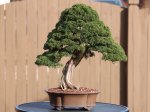willhopper
Shohin
I’ve been struggling with the “live vein” comments bonsai artists have been making on some of the videos I’ve been watching. Sometimes I’ve heard them say that they are identifying the live vein before creating deadwood or shari. I was under the impression at first that there were veins that remained alive along the tree’s trunk and it was my job to identify which were alive and which were dead. But that didn’t seem right because people choose certain trouble branches to jin, etc., and they are alive when they start.
So, do we merely create these veins by keeping a large enough portion of the bark and cambium intact from nubari?
So, do we merely create these veins by keeping a large enough portion of the bark and cambium intact from nubari?


